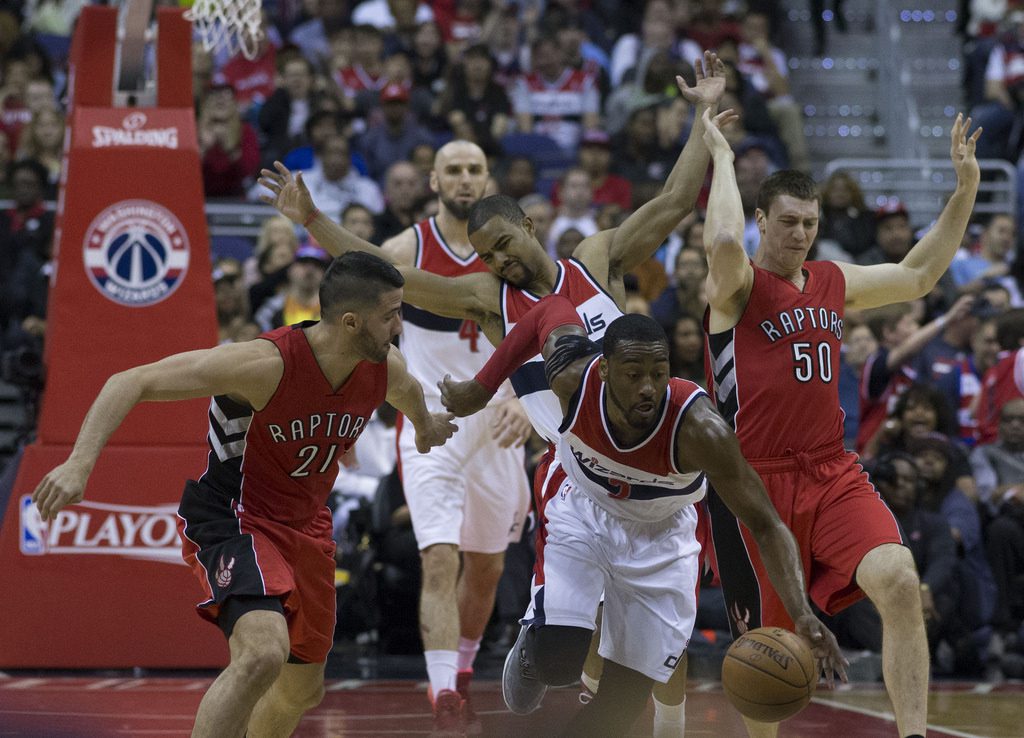Resume: 17.6 points, 4.6 rebounds (career best), 10.0 assists (2nd in league, career best), 1.7 steals, 40 double-doubles (7th in league), 35.9 minutes (7th in league), 45% FG (career best), 30% 3PT, 79% FT … Team record in games played: 45-34 (1-2 without) … Playoffs: 17.4 points, 4.7 rebounds, 11.9 assists, 1.4 steals, 1.4 blocks, 39.0 minutes, 39% FG, 17% 3PT, 85% FT, 5-2 record (1-2 without) … 2nd Team All-Defense, All-Star
Heading into every season the same countless number of storylines, questions, possibilities and developments are recycled. We wonder whether the defending champion can repeat. We consider what player who made a move in free agency can bring to the table for his new team. We talk about which rookie will make the most immediate impact. It’s the same stuff, over and over again, and it’s fantastic because there really isn’t a limit on how much preseason NBA talk is too much preseason NBA talk.
My favorite continual storyline that we ponder each year is what player is ready to make a leap. You know all three types of leaps, right?
The Average to Good Leap
- The two times that you see the Average to Good Leap are when a player changes teams and gets a bigger role (Think Tobias Harris a few years ago when he got traded from Milwaukee to Orlando) or when a players comes back a lot more competent in year two than he was in year one (Basically, this kind of leap happens for like 75 percent of second year players so long as they are in the rotation).
The Good to Great Leap
- Often times, the Most Improved Player award winner makes this sort of leap. Three of the last five winners of the Most Improved Player Award are Jimmy Butler, Paul George and Kevin Love. Textbook Good to Great Leap leapers.
The Great to Full-Blown Superstar Leap
- The good examples over the last few years: Stephen Curry and Anthony Davis last year … James Harden when he was traded from the Thunder to the Rockets … Dwight Howard in the 2009 Playoffs. All of these guys establish themselves as legitimate number one options for teams that can be contenders in the present or immediate future.
Every year there is a frequently discussed, yet never totally solidified watchlist of sorts of some of the players who qualify to make any of these leaps. This year, once again, John Wall is on the cusp of making the Great to Full-Blown Superstar Leap. If there was any doubt about it prior to last season, Wall established himself as a great NBA player during the 2014-15 campaign. He was once again an All-Star, he made 2nd Team All-Defense and he was just as deserving as Kyrie Irving or Klay Thompson were for a 3rd Team All-NBA spot.
Those accolades say quite a bit about Wall’s status in the league, but the eye test spoke just as loudly about his year to year improvement. Wall’s progression from redonk athlete with some of the necessary point guard skills to redonk athlete with a lot of the necessary point guard skills has been a gradual one, but heading into year six it feels like Wall is right there, ready to put it all together.
John Wall’s jumper has come miles from where it was when he taught us how to Dougie while bursting onto the scene during his rookie year. He’s much more comfortable stepping into them if defenses are willing to concede it, and last year more than any other season Wall made them pay. Per NBA.com, Wall was just as efficient shooting pull-up mid-range jumpers as Damian Lillard, James Harden or Russell Westbrook were last season.
The improvement of John Wall’s mid-range game was the biggest development in his all-around skill-set, and it’s why he’s gradually becoming a more dangerous pick and roll player. We’re getting close to the point where we see peak Wall; someone with insane athleticism, awesome court vision and the ability to understand and execute a half-court pick and roll offense. The problem here is that the full John Wall experience is somewhat dependent on what kind of teammates he’s out on the floor with.
The Wizards were in the bottom half of the league in Pace last season according to Basketball-Reference, and too much of the time Wall was flanked by two lumbering bigs, Bradley Beal (a top 35 player) and a Small Forward that was too shaky from deep for the Wizards offense to take off. It wasn’t until Randy Wittman decided to play a little smaller that the Wizards looked like they were ready to make their own leap, and Wall would be the one leading the charge, navigating his way thru an endless parade of pick and rolls with the right kind of weapons around him. Unfortunately, a wrist injury kept Wall out of a couple of Playoff games and the Wizards were eliminated in Round 2 for the second straight year.
Heading into the 2015-16 season, year six for Wall, it seems like most experts are expecting a down year for the Wizards. This, like most of the Wizards success over the last five years, is dependent on where John Wall goes from here. If he remains great the Wizards will manage to make the cut for the Playoffs yet again (they do play on the east coast, after all). If he makes the leap from great to full-blown superstar it may not translate to the Wizards playing postseason games into June this year, but at the very least it will be a joy to watch, and it gives Kevin Durant a little more motivation to head to D.C., knowing he won’t be the only superstar in town. But hey, that’s a whole different conversation for another time.













